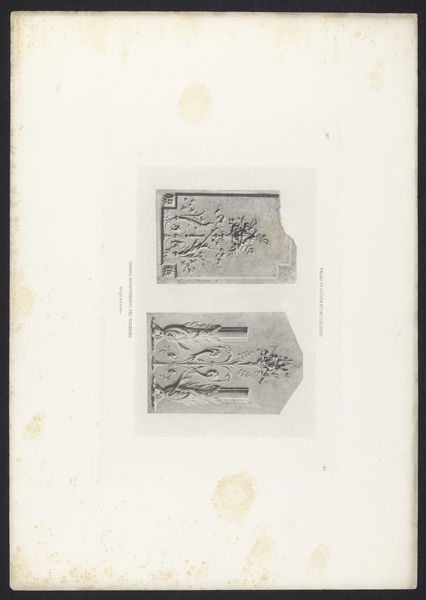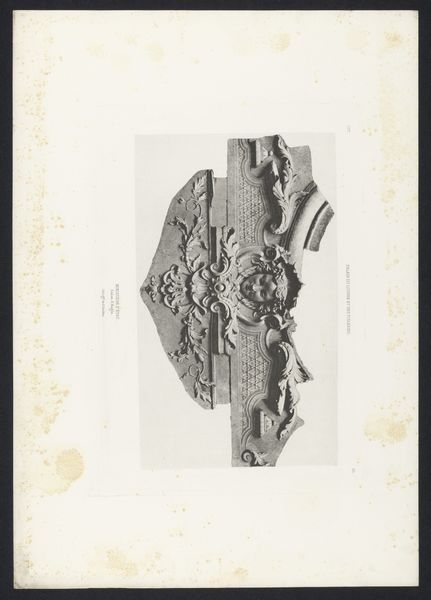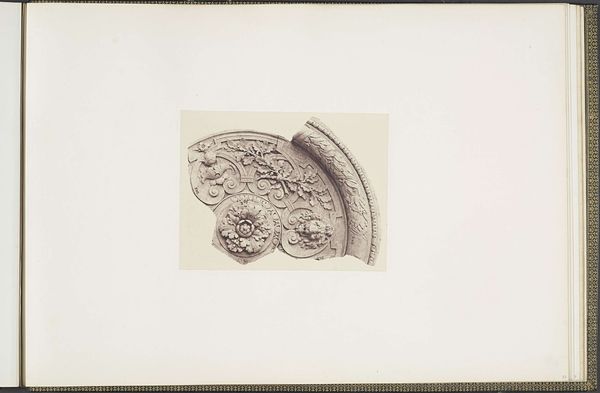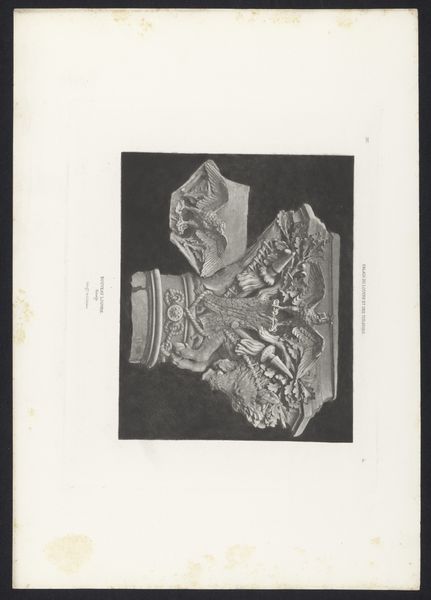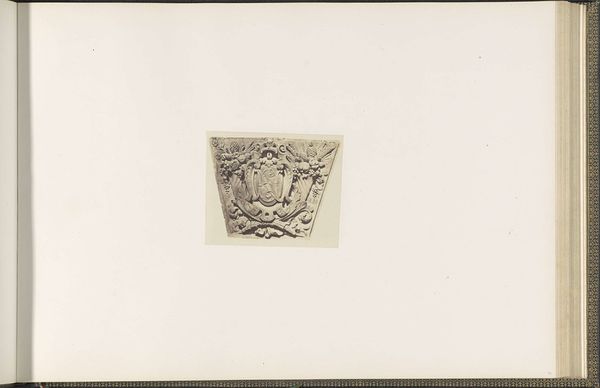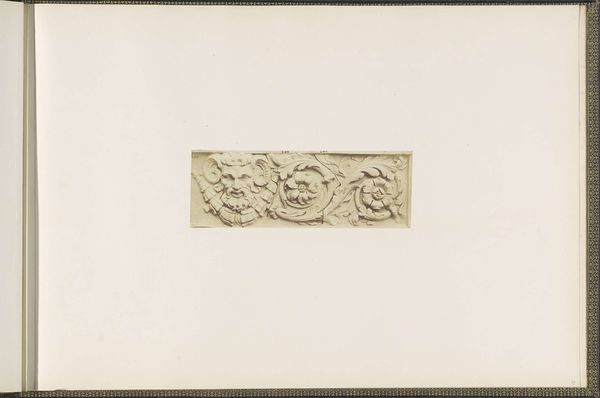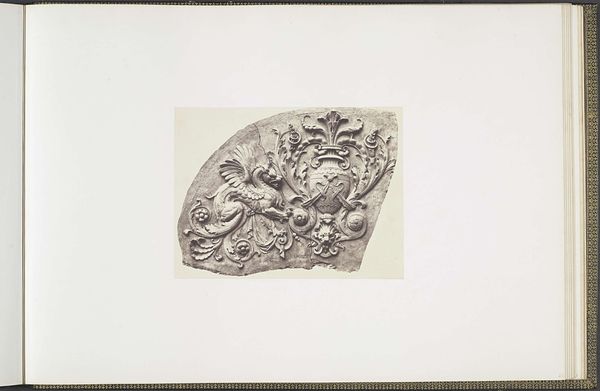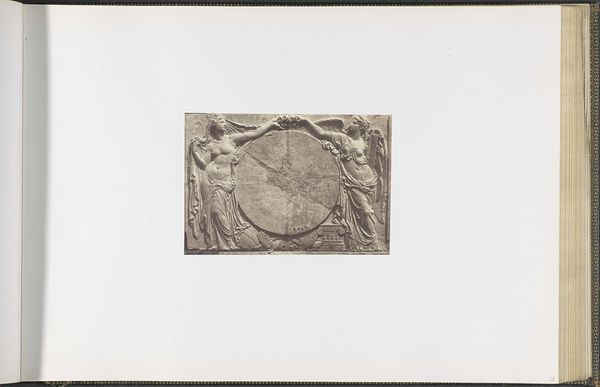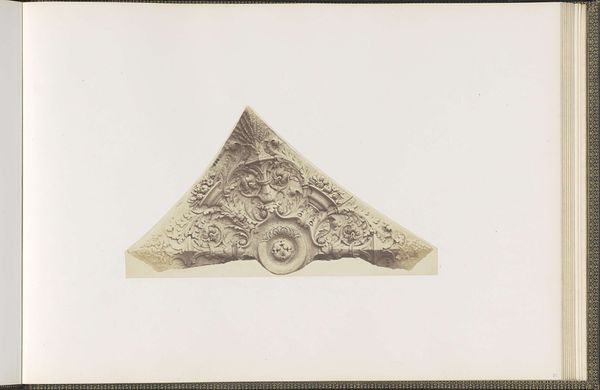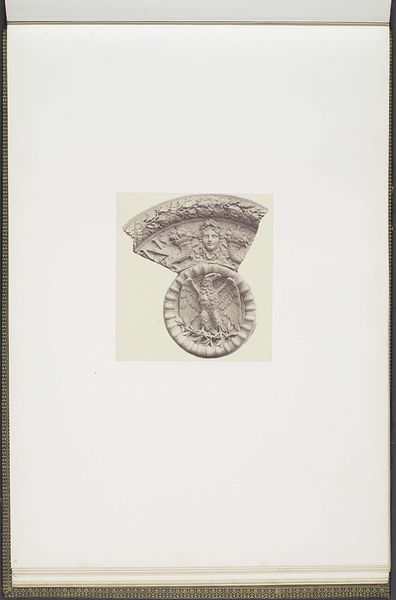
Fotoreproductie van een tekening, voorstellende een plafond (vermoedelijk) in het Palais des Tuileries te Parijs before 1870
0:00
0:00
edouardbaldus
Rijksmuseum
drawing, print, engraving
#
drawing
# print
#
geometric
#
engraving
Dimensions: height 173 mm, width 213 mm
Copyright: Rijks Museum: Open Domain
Curator: This is a photoreproduction of a drawing, likely dating from before 1870. The inscription suggests it depicts a ceiling within the Palais des Tuileries in Paris, and was made by Edouard Baldus. What strikes you most about it? Editor: The weight of detail, all that carved floral imagery, the figures almost swallowed by ornamentation. It suggests opulence, yet somehow feels confined. Is this a photographic reproduction of an engraving? Curator: Exactly. Baldus has captured an earlier drawing through photography and, with that engraving reproduced it on a plate. That means this image offers a remove from the original sculpted material. The final prints allowed a mass production. We can now engage in wider dissemination, to the consumption of images documenting historical and material conditions. Editor: Mass dissemination shifts its symbolic function entirely. In its original architectural context, the ornamentation signified royal power and divine right. Now, removed and reproduced, the engraving serves more as a memento, almost flattening the original intention to broadcast dynastic authority, but still carrying that association of the ruling class. I wonder about the choice to isolate this ceiling section. Is this a remnant? Curator: An astute observation. By isolating the ceiling panel, we not only see the skill involved in crafting ornamentation—the plasterwork, and labour input. We are also witnessing what can remain or what's prioritised. Think about how quickly royalist symbols later turned during revolutionary fervor into representations of former oppression. Here, you are given both preservation and context loss in tandem, as history’s heavy machinery. Editor: Precisely. The very act of preserving the design immortalizes a fragment of the old regime. This reproduction becomes a coded visual signifier. We receive this image in a dramatically altered social-political landscape, loaded with meaning. What’s so clever about mass consumption in this state is to observe our psychological ties with the visual, not only to disseminate at will to any end user. Curator: What initially reads as opulent ornament becomes entangled with both memory and accessibility. This copy alters its value and reach. Editor: Indeed. A potent reminder of how symbols can transform through time and reproduction. Curator: Agreed. Baldus leaves us contemplating how material conditions are so vital to observing change over time and cultural consumption.
Comments
No comments
Be the first to comment and join the conversation on the ultimate creative platform.

